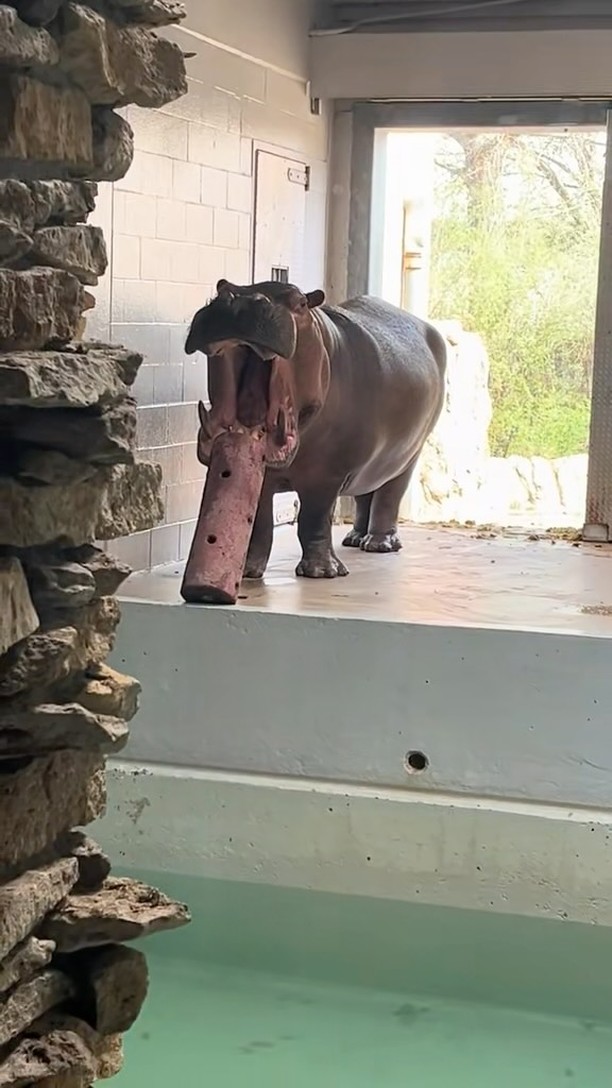- The significance of “push it to the limit” in the context of wildlife behavior, with a focus on hippos.
- Detailed examination of the role and behavior of hippos in their natural habitat.
- Challenges and considerations in managing hippos in zoo environments.
- Conservation efforts and the importance of habitat preservation for hippo populations.
- The relationship between human activities and hippo conservation, with strategies for coexistence.
The expression “push it to the limit,” when applied literally in the context of wildlife, presents a vivid and often untapped window into the tenacity and adaptive nature of species. One of the most imposing animals where this expression finds literal resonance is the hippopotamus. Known scientifically as Hippopotamus amphibius, this semi-aquatic creature demands recognition not only for its massive size but also for its ecological role and the conservation challenges it faces.
Hippos are a staple of African rivers and lakes, easily identified by their barrel-shaped bodies, large mouths, and curved tusks. Despite a somewhat comical appearance, they are one of the most formidable creatures in Africa. The phrase “push it to the limit” highlights their immense physical capabilities, crucial for survival in their habitats. Male hippos, for instance, exhibit control over territories in water bodies that can span up to 250 meters in length, demonstrating the need for both physical proximity and intense exertion to maintain dominance amidst competition for space and resources.
In their natural habitats, hippos are uniquely adapted to both aquatic and terrestrial life. They spend much of the day submerged in rivers or lakes to keep their massive bodies cool under the hot African sun. This aquatic lifestyle is essential, as it allows them to protect their sensitive skin from sunlight and maintain hydration. Their ability to hold their breath underwater for up to five minutes facilitates prolonged periods submerged, where they exhibit buoyancy and remarkable underwater agility. A hippo’s physical prowess is pushed to its limits when it comes to nightly forays for food. Emerging at dusk, hippos travel several kilometers on land to graze on grasses, showcasing remarkable endurance reflecting the true essence of “pushing it to the limit.”
In zoological environments, managing hippos presents unique challenges that stem from their size, aggressive behavior, and substantial spatial requirements. Zoo enclosures must simulate natural habitats as closely as possible to promote physical and psychological well-being. Adequate water bodies for submersion, appropriate land areas for grazing, and safe barriers to manage their territorial nature are basic requirements. Effective management channels their naturally aggressive tendencies into positive behaviors. Zoos also play a crucial role in educational outreach, bringing attention to conservation issues affecting hippos, such as habitat loss and human-wildlife conflict.
The conservation of hippos and their habitats is of global importance, as they face threats like poaching and habitat fragmentation. Classified as “vulnerable” by the International Union for Conservation of Nature (IUCN), hippos are primarily at risk due to intensive land use and water pollution, which degrade their habitats. Conservation efforts focus on habitat preservation, legal protection against poaching, and sustainable community practices surrounding their habitats. International collaborations bring conservationists together to develop strategies tailored to specific geographic challenges, which include strengthening park protection and promoting eco-tourism initiatives that economically benefit local communities while safeguarding hippo habitats.
The coexistence of humans and hippos requires strategic intervention to mitigate conflict, particularly in areas where human populations expand into nearby habitats. Conflicts arise as hippos venture into agricultural lands, causing significant damage and sometimes leading to confrontations with humans. To foster coexistence, strategies such as creating buffer zones, educating local populations about hippo behavior, and fostering dialogue between stakeholders are essential. These approaches promote understanding and reduce risk, ultimately contributing to the stability of hippo populations.
Taking “push it to the limit” literally in the context of hippos underscores the remarkable balance required for their survival, both in the wild and managed settings. It challenges us to not only view them through the lens of strength and capability but also to recognize the delicate interplay of ecological, managerial, and conservation dynamics. Each aspect of their lives demonstrates the critical need for comprehensive conservation strategies that ensure their survival. As with many species on the brink, the story of the hippo serves as a reminder of our responsibility and ability to influence positive outcomes for wildlife across the globe.
*****
Source Description
Taking “push it to the limit” literally. 🦛


